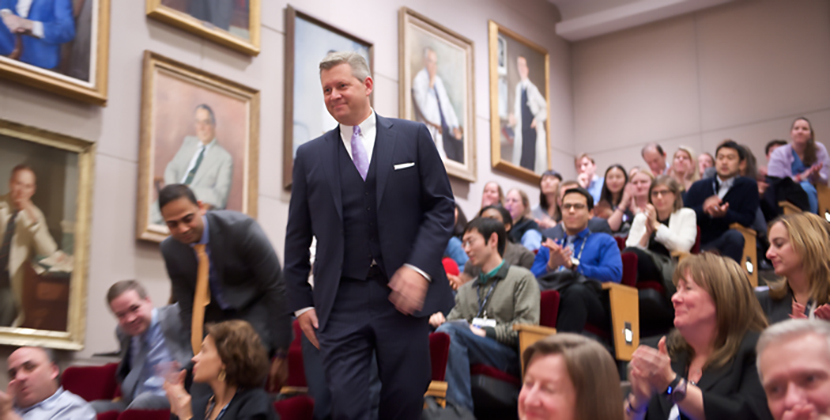
Reinventing Amputations: A Conversation with Matt Carty
Q: What led you to the field of prosthetics when you were starting your study of medicine?
A: One of the privileges of reconstructive surgery is dealing with ways people interact with the world. The limbs in particular act as our way of interfacing with other human beings. It’s appealing to offer people the ability to restore that functionality, and prosthetics is one way of doing thatOne of the privileges of reconstructive surgery is dealing with ways people interact with the world. The limbs in particular act as our way of interfacing with other human beings. It’s appealing to offer people the ability to restore that functionality, and prosthetics is one way of doing that.
Q: Can you talk about your specific research project?
A: We’re in a fascinating time in medical technology right now. We have an ability to biomechanically recreate the majesty that is a human hand or a foot. The status of prosthetics has advanced remarkably even over the last five or 10 years, so we have moved from a simple peg leg model to advanced devices. But what we lack is the interface between the human being and these new devices.
Our project is designed to ameliorate this problem. Amputation science hasn’t really changed much in over two millennia, so we are looking at reinventing the way amputations are done.
Q: How exactly are you trying to solve that problem?
A: Most prosthetics up until now have been designed to essentially be a socket interface. What we are talking about is providing an animated version of an amputation, which will enable us to restore complex actions, sensation, and the ability for the amputee to sense their limb in space.
Q: And how does that work?
A: We want to convert the standard static amputation model into a dynamic model, and to do so, we must recruit the body’s own building blocks. We would take pieces of muscle, nerves, and even skin patches, and incorporate them into the operation. The hope is, as the patient recovers, these building blocks will become relay points for the limb, and by extension, for the human brain to power a prosthetic. If we are successful, the brain would promote a sense of awareness about balance, strength, motion, or velocity.
“The status of prosthetics has advanced remarkably over the last five or ten years. But what we lack is the interface between the human being and these new devices. Our project is designed to ameliorate this problem [by] reinventing the way amputations are done.”
Q: Can you give me an example of how this would work?
A: Say a lower extremity amputee was walking on a thick carpet. They would be able to perceive the softness, the fullness of the carpet, and modify their gait. They would be able to enjoy activities such as being at a picnic on a warm summer day, to mesh their prosthetic toes into the grass, and feel things as though they were without an amputation.
Q: Do you have patients already who have beneffited from this work?
A: Yes, we have patients who have witnessed and benefitted from this technology in its infancy. We see it in the form of a young woman who lost her leg in the Boston Marathon and who can dance a year later. We see it in the form of people manipulating fine objects again with a prosthetic hand, which they couldn’t do previously. It is manifested in daily activities—from turning a key in a door to walking down the street. This project was designed to carry these activities forward to the next stage.
Q: I understand you are working with Dr. Hugh Herr, the director of the Bionics Lab at the MIT Media Lab. Can you explain the collaboration?
A: This operation requires an understanding of how those biologic relays will interface with a machine. So we have an extraordinary collaboration with Dr. Herr—a double amputee who, in his words, serves as the test pilot in trying new prototypes. Having Dr. Herr as a colleague and a partner advances the project remarkably because it allows us to incorporate what is possible right from the beginning.
Q: How does it feel to win the inaugural Stepping Strong Innovator Awards?
A: This kind of work happens every day at BWH, and I feel incredibly lucky and honored to be part of the Stepping Strong community.
